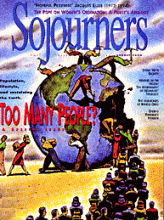When trying to make sense of the world population picture, there are lies, damn lies, and there are global statistics. On one hand, the numbers "prove" that the world’s burgeoning population is outstripping the Earth’s carrying capacity, and that massive starvation is likely as the sheer weight of too many people overwhelms the ability of the environment to withstand the impact of human growth.
On the other hand, some would argue that the numbers "prove" that population growth is not the problem—because in some places, and in some eras, rapid population growth and prosperity have occurred simultaneously. The Nether-lands or Japan are usually touted as examples of countries with dense populations and healthy economies.
The relationship between population and poverty, and between the number of people in the world and their effects on the environment, isn’t as simple as the global statistics might indicate. Drought, war, corruption, inequitable distribution of power and wealth—all can be more devastating to the Earth and to people’s well-being than population growth per se.
But the unavoidable reality is that where there is severe poverty, where people are malnourished and re-sources are stretched thin, adding more people makes the suffering worse. Despite considerable increases in food production over the last three decades, there are more poor people in the world than ever before. Despite a global abundance of food, many people cannot afford enough to eat. And where survival competes with protecting the environment, increasing the number of people will only add to degradation of the land.
Read the Full Article
